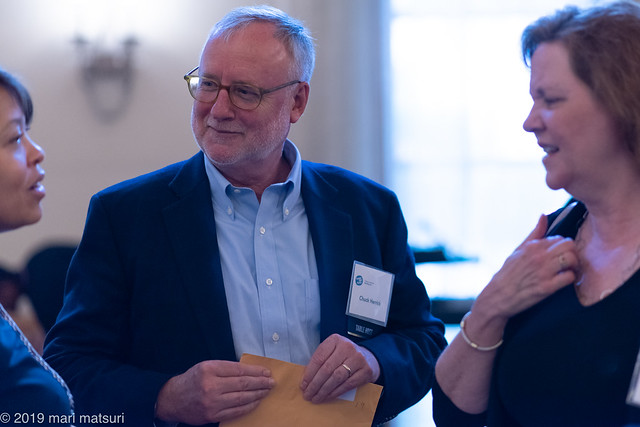Community
Some Impressions of the 2019 Point-in-Time Count

By Charles N Herrick, Friendship Place’s AimHire program volunteer and former board member.
It’s a little after 11:00 PM on a chilly, drizzly January night. Monica and I are walking along 46th Street a little South of DuPont Circle. Suddenly Monica stops, frozen to the sidewalk. She points and whispers, “I’m terrified of rats.” A few feet in front of us, a rat darts out of the shrubbery and skitters across the street. We wait until the rat is well away and continue along our designated route.
I’ve known Monica for about two hours. We’re assigned to work as a team as part of the 2019 Washington, DC Point-in-Time (PIT) Count. Required of all municipalities that receive HUD funding, the PIT is a survey of homeless persons conducted every year on a single night in January. The PIT is necessary because conventional census techniques tend to overlook people without a fixed address.
To implement the survey, volunteers and social workers walk throughout the city and count the number of people they encounter sleeping on the street. Each team is assigned an eight to ten block grid of the city. We have all attended a training session during which we were instructed how to administer the survey questionnaire and briefed on issues of safety and etiquette when interacting with people who live on the street.
The PIT is a tool to help us better understand how and why people become homeless. Sociologist Peter Rossi has identified three “dire conditions” of homelessness: extreme poverty, arising out of low earnings and low benefit levels; disability due to advanced age, alcoholism or substance abuse, and physical or mental illness; and disaffiliation because of absent or tenuous ties to family and few or no friends. The PIT questionnaire includes questions which provide data on the predicates of homelessness, things like a history of domestic abuse, criminal record, drug dependency, and loss of employment. It also illuminates the demographics of homelessness: gender identity, sexual orientation, military service, and ethnicity. This single- night enumeration enables the DC Department of Human Services and Interagency Council on Homelessness to identify gaps in the portfolio of services and informs program planning.
During our evening on the street we encounter and interview four men. Three sleeping under the porticos of the First Baptist Church of Washington DC and another dozing in an alley next to the Australian Embassy. One man refuses to talk, but the others submit patiently to our battery of questions, describe their predicament, and even offer opinions on matters such as the federal government shut-down, then in its 26th day.
It is now around midnight and we’ve completed about half of our assigned grid. Monica confides that she still has not gotten over the rat encounter. She explains that it reminded her of the 1971 movie Willard, which reminded her of Willard’s 1972 sequel, Ben, which reminded her of the Michael Jackson theme song from Ben, also entitled Ben. She starts singing, “Ben, the two of us need look no more, we both found what we were looking for…”
Over the past decade, the District’s homeless population has remained relatively stable, going from 6,539 in 2010 to a high of 8,350 in 2016. Happily, this year’s data continue a three-year downward trend with a tally of 6,521 homeless DC residents. Although this trend is surely promising, long-term PIT data remind us that homelessness is a stubborn problem within the District of Columbia, a societal issue requiring sustained effort and investment. Mayor Bowser has worked with not-for-profit homeless services providers and community leaders to develop a plan to virtually eliminate homelessness in the District by the year 2020. Importantly, the Mayor has challenged DC residents with being part of an all-eight ward solution to chronic homelessness in our city. This ambitious effort focuses on:
- Support for housing-first and employment-first models of assisting vulnerable individuals;
- increased investment in affordable housing;
- improved homelessness prevention programs, using predictive analyses;
- transitioning away from mega-shelters to dignified, community-scaled shelters;
- and an expanded array of outreach and day-time services.
It’s now about 2:00 AM and we’ve finished our part of the count. We meet with our coordinator at the 24-hour Wawa on 19th Street, NW, where we submit our completed survey forms. As I drive home, three things cross my mind: a feeling of good fortune for being spared the dire conditions that can push even strong individuals into a spiral of homelessness; a sense of satisfaction that I’ve been able to do a little something to help our homeless neighbors; and a blush of annoyance because I can’t stop humming… the theme from Ben.






